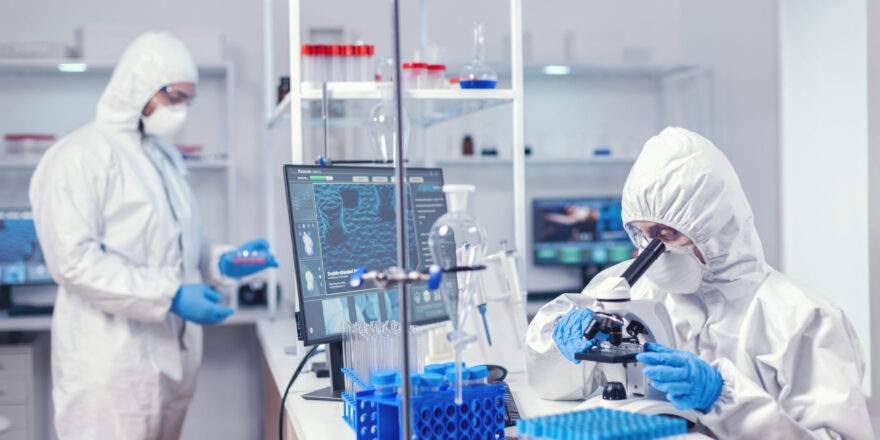In the high-stakes field of scientific study, even minor tremors can have disastrous results. Meet one of the laboratory’s hidden champions: the anti-vibration tables. While these tables might seem like simple lab furniture, their impact on scientific research, particularly in disciplines such as material science, biotechnology, chemistry, physics, and optics, is profound. These new platforms are critical instruments for assuring the precision, reliability, and, ultimately, success of groundbreaking research because they minimise interruptions and provide a solid basis for experimentation.
In this blog, we will delve into the transformative role of anti-vibration tables for laboratories in improving laboratory results and the exciting innovations and technologies that are revolutionising the world of anti-vibration tables in laboratory research.
What Are Anti-Vibration Tables?
An anti-vibration table is the best option when you need consistent, dependable, and exact results. Loud noises, people moving around, and even cars driving down the road can all generate vibrations, which can reduce sample reading. Anti-vibration tables for laboratories feature a sturdy, solid surface intended to reduce vibrations.
Why Do We Need Anti-Vibration Tables For Laboratories
Anti-vibration tables for labs have long been a staple in research labs, but the request for a stable platform continues. The requirement for these tables in labs comes down to one important factor: accuracy. Even minor vibrations might disturb complex studies and jeopardise the accuracy of data. For instance, in the biotechnology or chemistry lab, the use of anti-vibration tables significantly improved the precision of the results. Here is why anti-vibration tables are important in labs.
1. In Microscopic Research
When researching, scientists use advanced microscopes to observe microscopic details that our naked eye can’t see. Even small tremors from the nearby machine or floor could distort the image, making it difficult to see what’s going on. Anti-vibration tables are like super sturdy platforms that soak up those shakes, keeping the microscope nice and steady for clear pictures.
2. Sensitive Measurements
Some science experiments involve delicate equipment that measures things very precisely. A tiny vibration can be like someone bumping your elbow while writing with a super-fine pen—the line gets messed up! These tables act as shields, protecting the equipment from those shakes and keeping the microscope nice and steady for clear pictures.
3. Detection Of Delicate Signals
Researchers may utilise technology that detects faint signals from the objects examined. It’s like trying to hear a whisper in a crowded space. Vibrations from the floor or walls act like loud noises, drowning out whispers. These tables create a super quiet environment, like putting on noise-cancelling headphones so scientists can hear those faint signals and make amazing discoveries.
4. Experiment Accuracy
When a researcher needs to repeat an experiment to ensure accurate results, the results might differ if the lab furniture is shaky. These anti-vibration tables for the laboratory keep things steady, so researchers can be confident that when they repeat an experiment, they’ll get the same answer because the conditions are the same.
Revolutionary Impact Of Anti-Vibration Tables In Labs
The basic applications of anti-vibration tables remain unchanged, but their employment in modern laboratories is evolving in interesting new ways. Here’s how anti-vibration table makers will include technology in 2024 to suit the demands of modern research.
1. Enhanced Stability
Low-frequency vibrations are particularly well-isolated by traditional anti-vibration tables. But nowadays, research frequently uses much more sensitive equipment and tests vulnerable to high-frequency disruptions. Anti-vibration tables are being made using active dampening technology to address this. These tables provide an incredibly steady work surface by dynamically counteracting vibrations in real time through sensors, processors, and controllers.
2. Smart Anti-Vibration Tables
Traditional antivibration tables have significantly impacted lab research, but smart tables have taken it a step further. These intelligent platforms boast built-in sensors that detect subtle vibrations, allowing researchers to create customised cancellation profiles for their specific equipment and research.
3. Customisation For Cutting-Edge Research
Anti-vibration tables for labs go beyond just creating a steady platform. They provide valuable data, too. Although they provide excellent help, they are no longer one-size-fits-all. Advanced models allow researchers to create custom vibration cancellation profiles for their experiments, targeting specific tremors that might affect their work. Real-time sensor data lets them fine-tune the table settings, ensuring optimal stability. This customisation caters to diverse equipment and research needs, transforming anti-vibration tables from tools into adaptable partners for cutting-edge science.
4. Future Of Anti-Vibration Technology
The future of anti-vibration technology is very bright. Imagine tables that learn and adapt to specific labs, automatically adjusting their settings for ongoing research. Integration with lab automation systems and remote monitoring capabilities are also on the horizon. Anti-vibration tables for labs are not just any random equipment; they are the cornerstone of a future where research stability is intelligent, adaptable, and empowers scientists to make groundbreaking discoveries.
Role of Anti-Vibration Table Manufacturers
While Anti-vibration tables play a significant role in lab research, the story doesn’t end there. The anti-vibration table manufacturers are the unsung heroes making contributions in the background to scientific progress. Constantly innovating and collaborating, they empower cutting-edge scientific exploration. They are the silent partners behind groundbreaking discoveries, ensuring a foundation of stability upon which the future of science is built. Their dedication and advancements deserve our appreciation.
Conclusion
These customised lab tables function similarly to earthquake shock absorbers but are much smaller. They prevent those tiny motions from interfering with delicate equipment, allowing scientists to achieve highly accurate results. Anti-vibration table manufacturers are like the pit crew for these tables, continuously upgrading them and collaborating with scientists to ensure they meet the most recent research needs.
Santech Labs is a reputable manufacturer and supplier of modular lab furniture. We are an ISO-certified organisation providing innovative solutions for setting up empirical labs that compromise cost and flexibility. An anti-vibration table, fume hoods, pedestal systems, the D frame system, PP laboratory cabinets, plinth systems, sleek systems, storage cabinets, and the C frame system are just a few of the valuable extras and equipment we offer to compliment your lab’s inventory.




